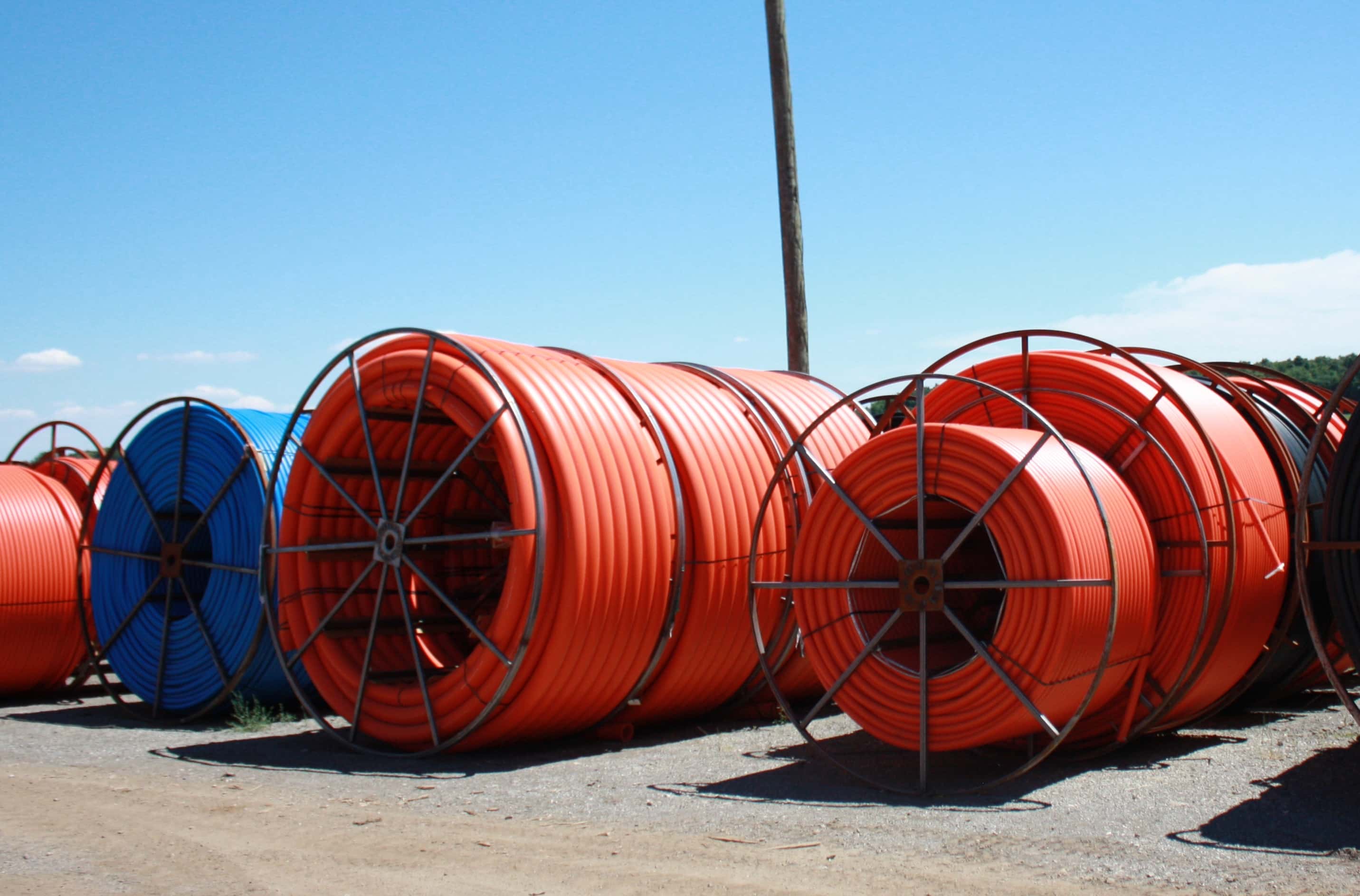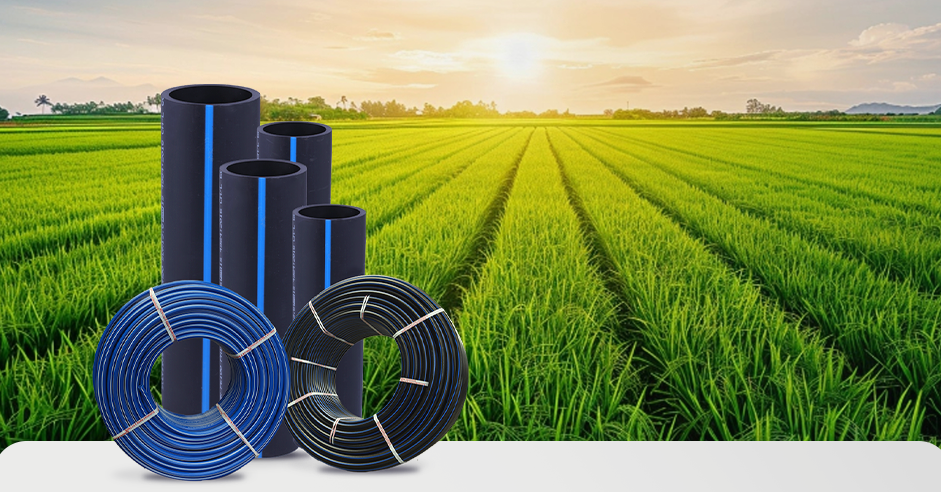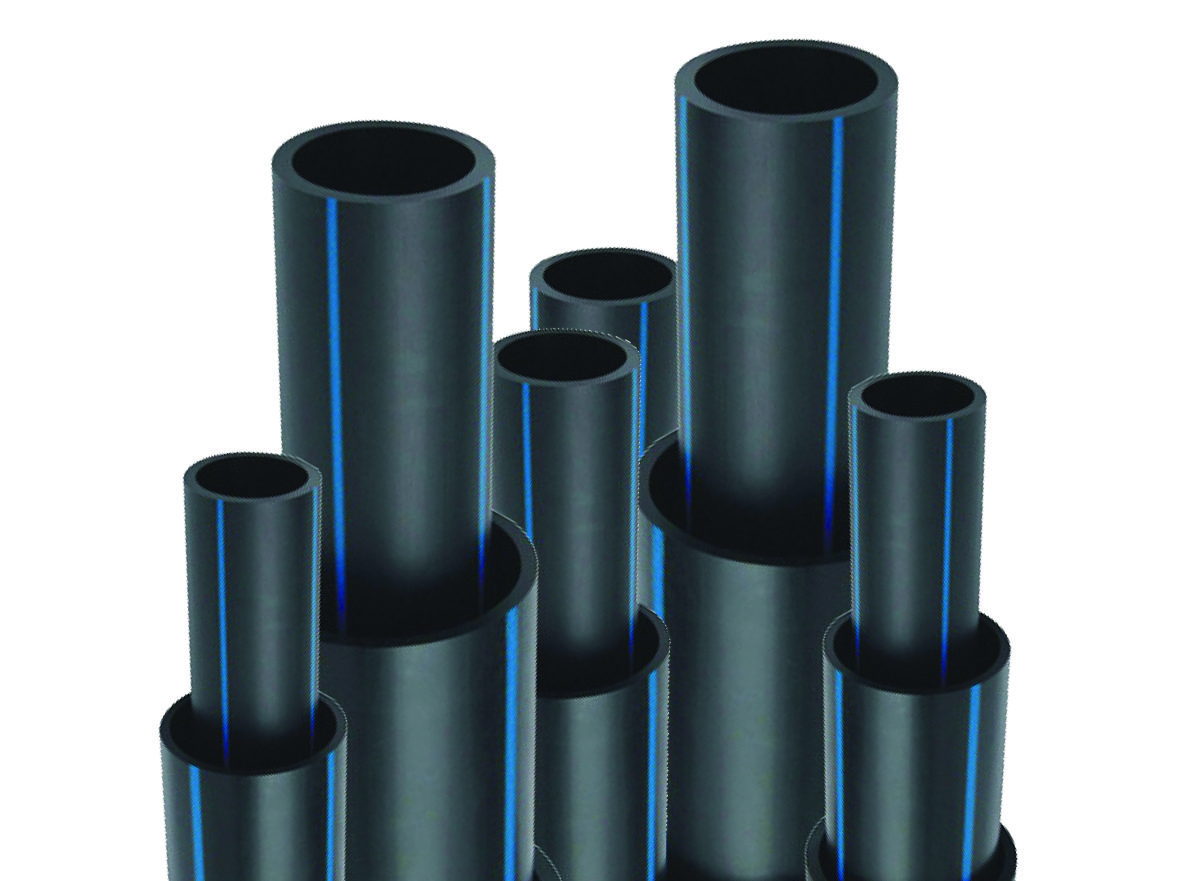Comprehensive Walkthrough to Installing hdpe pipe fittings Midland TX for Long-Term Durability
Explore the Manufacturing Refine Behind High-Quality HDPE Pipe and Its Applications
The production procedure of premium HDPE pipelines is detailed and methodical. It begins with the choice of raw products that improve efficiency. Following this, ethylene undergoes polymerization to create resin, which is after that shaped through extrusion. Quality control is paramount, ensuring that the final item fulfills stringent requirements. The trip of HDPE pipes does not finish with manufacturing. Their applications across different industries reveal a broader importance worth checking out.
Comprehending HDPE: Features and Advantages

High-density polyethylene (HDPE) is a functional thermoplastic known for its resilience and resistance to various ecological aspects. This product exhibits exceptional tensile stamina, making it appropriate for requiring applications. Its low-density framework adds to a lightweight item, assisting in ease of taking care of and installation. HDPE additionally showcases exceptional resistance to chemicals, which reduces deterioration when exposed to severe compounds.
The product's low moisture absorption better boosts its long life, making it perfect for usage in pipes and storage space tanks. In addition, HDPE is resistant to ultraviolet (UV) radiation, making sure that items keep their integrity also when exposed to sunlight. Its versatility enables for the development of intricate forms without endangering stamina. The environment-friendly nature of HDPE, usually obtained from recycled materials, includes in its charm, advertising sustainable techniques in production. In general, these residential or commercial properties and benefits make HDPE a preferred selection for numerous industrial and consumer applications.
Raw Material Choice for HDPE Production
The selection of basic materials for HDPE manufacturing is important to verify the end product satisfies the wanted requirements and top quality criteria. High-density polyethylene (HDPE) is largely produced from polymerized ethylene, stemmed from fossil fuels such as natural gas or petroleum. The top quality of these feedstocks significantly influences the mechanical and thermal properties of the final HDPE.
Ingredients likewise play a substantial function in boosting HDPE's performance, consisting of anti-oxidants, UV stabilizers, and colorants, which improve longevity and resistance to environmental aspects. The selection process need to consider not only the chemical composition of the raw materials however additionally their processing attributes to guarantee reliable production.
The sourcing of raw materials should prioritize sustainability and conformity with environmental policies, as liable methods are vital in today's market. Inevitably, mindful resources option lays the structure for producing premium HDPE pipes ideal for varied applications.
The Extrusion Process: Forming HDPE Pipeline
The extrusion procedure plays an important duty in shaping HDPE pipelines, beginning with careful product preparation methods that assure optimal flow and consistency. Similarly vital is the design of the die, which straight influences the final measurements and surface top quality of the pipeline. Together, these aspects contribute significantly to the effectiveness and high quality of HDPE pipe production.
Material Prep Work Methods
Reliable production of HDPE pipelines starts with thorough material prep work methods, specifically the extrusion procedure. Throughout this phase, high-density polyethylene resin is first dried out to eliminate wetness, guaranteeing perfect circulation qualities. The resin is after that fed right into the extruder, where it undergoes home heating and melting, transforming into a viscous state. This heating process is meticulously controlled to maintain the product's stability and performance. The molten HDPE is required through a die, forming it into a continuous pipeline form. Appropriate temperature monitoring during extrusion is vital, as it directly influences the product's homes and the end product quality. Once shaped, the HDPE pipe is cooled and reduced to defined sizes, ready for succeeding processing and applications.
Die Layout Importance
Precision in die layout plays a necessary duty in the extrusion procedure of HDPE pipelines. The die serves as the final shaping tool, straight influencing the pipeline's measurements, wall surface density, and surface area finish. A well-designed die guarantees uniform product flow, lowering flaws such as irregularities and vulnerable points. The geometry of the die should be maximized to suit the particular buildings of HDPE, including its viscosity and thermal habits throughout extrusion. Furthermore, the cooling rate of the material as it travels through the die can substantially impact the pipe's structural honesty. Spending in innovative die modern technology is vital for producers intending to produce premium HDPE pipes that fulfill industry requirements and consumer assumptions.
Quality Control Steps in HDPE Production
Various aspects affect the top quality of HDPE pipe manufacturing, effective top quality control actions are essential to assure uniformity and dependability in the last product (American Plastics HDPE Pipe for Oilfield). Trick quality assurance techniques consist of extensive product assessment, validating that the raw polyethylene satisfies well-known criteria for purity and density. Throughout the extrusion procedure, parameters such as temperature, stress, and cooling time are closely kept track of to keep dimensional precision and structural stability
Additionally, post-production testing is crucial; manufacturers frequently carry out hydrostatic examinations to assess the pipe's stamina and resistance to stress. Visual examinations for surface issues further boost quality control. Qualification from appropriate standards companies, like ASTM or ISO, provides an extra layer of reputation. By applying these complete quality control actions, suppliers can reduce issues, improve efficiency, and make certain that the HDPE pipes fulfill the particular requirements of different applications, eventually bring about consumer satisfaction and rely on the item.
Applications of HDPE Pipe Across Industries
HDPE pipes are made use of throughout different sectors as a result of their toughness and convenience. In water circulation systems, they guarantee efficient delivery, while in wastewater monitoring, they provide trustworthy options for waste transport. In addition, agricultural watering networks take advantage of HDPE's resistance to deterioration and versatility, making it an ideal option for contemporary farming techniques.

Water Circulation Equipments
A considerable number of sectors count on high-density polyethylene (HDPE) pipes for efficient water circulation systems. Recognized for their longevity and resistance to deterioration, HDPE pipelines are widely made use of in municipal water system networks, farming watering, and industrial applications. Their lightweight nature promotes easy handling and setup, lowering labor prices and time. Furthermore, HDPE pipelines can fit numerous stress degrees, making them suitable for both low and high-pressure systems. custom hdpe pipe manufacturing Midland TX. The adaptability of the material allows for seamless combination right into existing infrastructure, lessening the need for substantial excavation. Additionally, HDPE's resistance to chemical seeping guarantees that the water supplied remains safe and clean, making it an optimal selection for maintaining the high quality of potable water throughout different industries
Wastewater Monitoring Solutions
Efficient water circulation systems additionally lead the way for ingenious wastewater management solutions, where high-density polyethylene (HDPE) pipes play a significant duty. Renowned for their longevity and resistance to rust, HDPE pipelines are optimal for moving wastewater in numerous settings. Their adaptability enables very easy setup in complex settings, lessening the demand for comprehensive excavation. In addition, HDPE's smooth indoor surface minimizes friction, improving flow prices and effectiveness. These pipelines are likewise immune to chemical leaching, guaranteeing that contaminants do not jeopardize the surrounding environment. Industries, towns, and treatment facilities increasingly depend on HDPE pipes for their reliability and long life, making them a recommended selection for modern wastewater management systems. This flexibility emphasizes the crucial value of HDPE pipes across countless applications.
Agricultural Irrigation Networks
Agricultural irrigation networks benefit substantially from the use of high-density polyethylene (HDPE) pipes, which provide reliable and reliable water distribution to crops. HDPE pipelines are lightweight, making them very easy to deliver and install, while their flexibility allows for different configurations in diverse surfaces. These pipelines demonstrate excellent resistance to deterioration, chemicals, and UV radiation, making sure sturdiness in harsh agricultural settings. Furthermore, their smooth indoor surface area decreases rubbing loss, optimizing water flow and minimizing power costs associated with pumping. The durability of HDPE pipes, commonly going beyond 50 years, adds to decrease maintenance and replacement expenditures. Farmers progressively rely on HDPE pipelines to enhance irrigation efficiency and advertise sustainable agricultural techniques, inevitably leading to boosted plant returns and resource conservation.

Future Fads in HDPE Pipe Technology
As the need for sustainable and efficient facilities expands, developments in HDPE pipe innovation are positioned to transform different sectors. Emerging patterns consist of the combination of smart modern technologies, such as sensors and IoT abilities, which assist in real-time monitoring of pipeline problems, reducing upkeep costs and stopping leaks. Additionally, the advancement of sophisticated production methods, such as 3D printing, is making it possible for the manufacturing of complex, personalized pipe styles that provide to certain task demands.
In addition, the concentrate on recycling and circular economic climate methods is driving the innovation of HDPE pipelines made from recycled materials, improving sustainability. Enhanced jointing methods, such as electro-fusion and mechanical fittings, are additionally improving installation effectiveness and dependability. The expanding emphasis on ecological laws is pressing makers to take on greener production procedures, guaranteeing that HDPE pipelines not just meet sector criteria yet also foster an even more lasting future for infrastructure growth.
Regularly Asked Questions
How Does HDPE Contrast to Various Other Plastic Materials?
HDPE outperforms many various other plastic materials regarding durability, chemical resistance, and adaptability. Its low thickness and high tensile toughness make it optimal for various applications, commonly going beyond alternatives in both efficiency and durability.
What Are the Environmental Effects of HDPE Manufacturing?
The ecological influences of HDPE production consist of greenhouse gas emissions, energy consumption, and possible pollution from making procedures. Furthermore, incorrect disposal can cause dirt and water contamination, increasing worries regarding long-lasting eco-friendly effects.
Can HDPE Pipeline Be Reused?
Yes, HDPE pipes can be reused. Several centers approve utilized HDPE for handling, transforming it right into brand-new products. This recycling contributes to sustainability initiatives, reducing plastic waste while saving sources and power in the manufacturing cycle.
What Is the Life-span of HDPE Water Lines?

Exactly How Do Temperature Level Variations Impact HDPE Pipeline Performance?
Temperature level variants considerably read more impact HDPE pipe efficiency, influencing adaptability and stamina. Heats can bring about softening, while low temperature levels might cause brittleness, inevitably affecting the pipe's durability and viability for various applications in diverse environments.